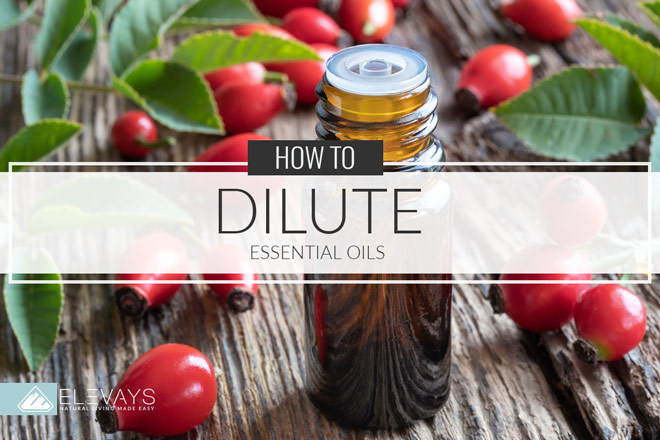Essential oils are one of my favorite natural remedies and we use them every day as a family. Therapeutic-grade essential oils are highly concentrated and highly effective so we’re going to cover some essential oil safety tips in this article.
Essential oils are similar to medications in the way there can be a different response depending on the person. Kids, for example, are much more easily affected by certain essential oils. Children and pregnant women require further dilution than most adults for these reasons. Other oils may cause skin irritation or sensitize the skin, making you more likely to get a sunburn if you spend time outside.
But it’s crucial that everyone, regardless of age, knows how to use essential oils safely. Follow these guidelines on how to dilute essential oils properly, based on your preferred use and needs.
TRUTH BOMB:
You’re
Already killing it!
If You Were More Consistent With Your Wellness Routine, You’d Be Unstoppable.
How to Dilute Essential Oils
The best way to avoid causing an adverse skin reaction is to dilute the essential oil. Dilution will also allow your essential oils to last longer or cover a larger surface area. In topical applications, for example, a drop of essential oil spreads further along your skin with a carrier oil. The more you can spread the essential oil, the less you need.
How to Dilute Essential Oils with a Carrier Oil
A carrier oil helps carry the essential oil to your body. There are many carrier oils available. The most popular carrier oils include:
- Jojoba oil
- Coconut oil
- Olive oil
- Sweet almond oil
- Avocado oil
- Apricot kernel oil
- Argan oil
- Rosehip oil
- Primrose oil
- Grapeseed oil
- Moringa oil
- Macadamia nut oil
- Black cumin seed oil
- Sesame seed oil
- Cranberry seed oil
- Hemp seed oil
The oil you choose depends on your needs and what you’re using the essential oil for. You can also use face moisturizers, lotions, body butters, creams, shampoos, conditioners, soaps, aloe vera, and other personal care products to dilute essential oils.
To dilute an essential oil with a carrier oil (or other product), you may need to consider what mode of application to use and why you’re using the essential oil. Some carriers are better for ingestion, for example, while others help the skin absorb the oil better. Others are better for use on the face or body.
An appropriate adult dilution is to stick with using 1 to 4 drops of essential oil per teaspoon of carrier oil. Start with less and then work your way up to get the desired result. For kids, pregnancy and the elderly the dilutions are a bit different. These are good dilution starting points broken down by age/stage:
- For babies use 1 drop per 2 teaspoons of carrier oil
- For children ages 2 to 6 use 1 to 3 drops per teaspoon of carrier oil
- For adults 1 to 4 drops per teaspoon of carrier oil
- For pregnancy 1 drop per teaspoon of carrier oil
- For seniors, 1 drop per 2 teaspoons of carrier oil
If you have sensitive skin, however, you may want to reduce the dilution to .5%. Try using a drop of essential oil for every two teaspoons of carrier oil.
Check out this dilution guideline for using a 10mL roller bottle of essential oil with two teaspoons of carrier oil:
- 0.5% dilution – 1 drop of essential oil. Use for highly sensitive skin, patch tests, or infants.
- 1% dilution – 3 drops of essential oil. Best for kids over 2 years, the elderly, people with diseases, or as daily skincare regimens.
- 2% dilution – 6 drops of essential oil. Recommended for adults.
- 3-5% dilution – 9-15 drops of essential oil. Ideal for short-term application to a small area and typically for acute issues.
Caution: If the carrier oil is not diluted enough there can be skin irritation. This is why it’s really important to dilute properly – especially for the young and elderly. Keep in mind that if there are known nut allergies, carrier oils with nuts (such as macadamia nut oil) can trigger a reaction. You should also avoid topical application of citrus essential oils if you plan to spend time in the sun, as they’re photosensitizing.
Topical Application
Most essential oils require a carrier oil for topical application, and you may use these products for your hair, face, or body. For the most part, you should avoid applying essential oils directly to your skin without a carrier. The other thing is that unless you want to feel like your skin has been set on fire, I would recommend avoiding the following (highly sensitizing oils) for topical use – unless they are heavily diluted and you have a super compelling reason: cinnamon, oregano, clove. But other than that, most other oils are fine for topical application.
How to Dilute Essential Oils for Skin: I LOVE using essential oils for natural skin and body care. Wrinkles, breakouts, dry skin? Oils can handle all of that and then some. Here’s the thing though: Oils are most potent when they are diluted at the time of application. Some people like to dilute large batches of essential oil in a carrier all at one time. I don’t like this approach. This exposes the essential oil to further oxidation once it leaves the bottle and diminishes potency over time.
I much more prefer diluting in small amounts to keep the dilution fresh and exposed to as little oxidation as possible. For instance, if I am adding essential oils to my lotion I do it at the time of application instead of adding lots of drops of essential oil to the bottle of lotion. The reason for this is the oxidation issue that I already mentioned, but also because many bottles that hold our personal care products are not ideal for essential oils. They are often plastic or clear glass both of which are not good for essential oils. Oils can eat through plastic and because they are photosensitive they should be stored in dark glass bottles and not clear ones.
How to Dilute Essential Oils for the Face: You can mix an essential oil with a skin-friendly carrier oil (based on your specific skin type) or your favorite face moisturizer. Here’s my favorites:
- Jojoba Oil – best all around for skin care and doesn’t clog pores
- Argan Oil – best for wrinkles and anti-aging
- Almond Oil – best for body oil – high in Vitamin E (which the skin loves)
- Extra Virgin Olive Oil – best for really dry skin
Coconut Oil: Essential Oils’ Best Topical Carrier for General Use
Various carrier oils come with added benefits. Nutty carrier oils, for example, contain antioxidants and are thinner in texture, making them ideal for the skin. However, fractionated coconut oil is the overall best carrier for topical application. Thanks to its natural properties, coconut oil absorbs into the skin in no time.
The most adored carrier oil by the essential oil community, fractionated coconut oil doesn’t have an aroma that gets in the way and is highly versatile for a range of uses. It works well for most people’s needs, nourishes the skin, and can even help prevent skin reactions from re-occurring (2).
How to Dilute Essential Oils with Coconut Oil: Typical in skin and hair care, 1% dilution is ideal for diluting fractionated coconut oil. Apply 3 drops of essential oil per 2 teaspoons of coconut oil. Don’t use coconut oil on your face, however. It’s highly comedogenic and can clog pores.
How to Add Essential Oils to a Bath: This is hands down my favorite way to use essential oils. To relax in a bath after a long day. For a bath I typically add 10 to 15 drops of essential oil to the water (I have a very large soaking tub). You can adjust it down depending on the size of your tub. Be sure to mix the essential oils with a carrier oil or bubble bath (my favorite) before being added under running water .
Aromatherapy Essential Oil Spray
Over-the-counter air fresheners are full of toxins and hazardous chemicals, but less than 10% of the ingredients are disclosed on the label (1). With natural, homemade room sprays, you can freshen up your home without worry. You won’t need to dilute the essential oils as much as you would with a topical application either, and you can even mix your room spray directly in the bottle.
How to Dilute Essential Oils for Spray: A higher 3% dilution is excellent for home care. Use 15-20 drops of essential oils with a 16 ounce spray bottle. You can mix the count between many essential oils as well. This page has one of my favorite essential oil cleaning recipes.
How to Dilute Essential Oils For Certain Uses
For safety, you’ll also need to dilute essential oils based on who plans to use them. Kids, for example, are more susceptible to the power of the oils. For use with children or pregnant mothers, you must dilute an essential oil more for every year younger the child is.
How to Dilute Essential Oils During Pregnancy
Pregnant and nursing mothers should take special care when using essential oils, as they’re not always recommended for safety. Although essential oils can help fight aches and pains, stress during labor, or everyday morning sickness in pregnant women (3), they’re best inhaled or used in aromatherapy. The safety of ingesting essential oils during pregnancy is unknown, so discuss with your health care provider and keep in mind that peppermint can dry up your milk supply so nursing moms, it’s recommended to avoid topical application of this oil.
Other Important Safety Tips
If you ever doubt the safety of a specific essential oil, check the bottle for safety information. Stop use immediately if you notice:
- Skin irritation
- Headache
- Nausea
- Dizziness
- Respiratory issues
And if you do experience a sensitivity reaction to any essential oil, discontinue use. You may try further diluting the oil. Apply fractionated coconut oil to the area to reduce the response, reapplying every few minutes.
Essential oils are extremely safe when used appropriately and unlike medications they carry no side effects. This is just one reason why we absolutely LOVE essential oils.
Sources:
- Steinmann, Anne. (2016). Building and Environment. Vol. 111. Ten questions concerning air fresheners and indoor built environments. Retrieved from: https://www.sciencedirect.com/science/article/pii/S0360132316304334
- Clark, Marge. (2008). Essential Oils and Aromatics: A Step-by-Step Guide for Use in Massage and Aromatherapy. Retrieved from: https://www.aromaweb.com/books/clark.asp
- Patel, Shivani. (2018). UT Southwestern Medical Center. Essential oils: A pain management alternative for labor and delivery. Retrieved from: https://utswmed.org/medblog/essential-oils-pregnancy/
- National Institutes of Health. (2007). Lavender and Tea Tree Oils May Cause Breast Growth in Boys. Retrieved from: https://www.nih.gov/news-events/news-releases/lavender-tea-tree-oils-may-cause-breast-growth-boys





READ the Latest
Breakfast
Longevity
Health Habits
Health Habits